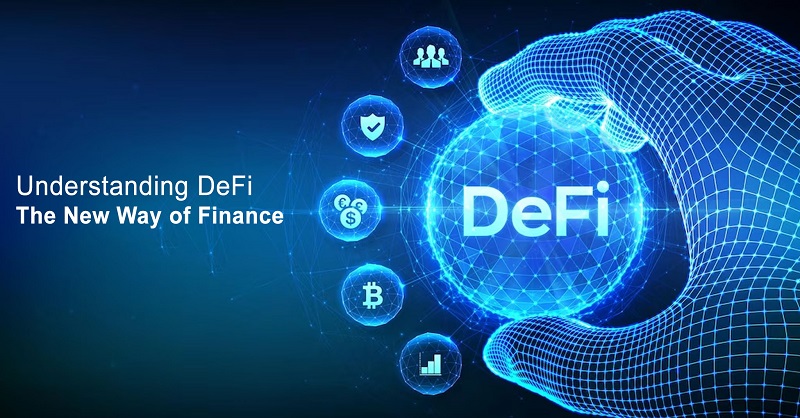The rapid evolution of Decentralized Finance (DeFi) is redefining the way financial transactions occur, offering an open, permissionless alternative to traditional banking. With billions of dollars locked in DeFi protocols, these platforms are enabling innovations in lending, borrowing, trading, and staking. In this article, we dive into some of the top DeFi protocols that are transforming the financial landscape and empowering users worldwide.
1. Uniswap: The Pioneer of Decentralized Exchanges (DEXs)
Uniswap is a leading decentralized exchange that allows users to swap cryptocurrencies directly from their wallets without the need for an intermediary.
Why It Stands Out: Its automated market maker (AMM) model replaced traditional order books with liquidity pools, making trading more efficient and accessible.
Impact on Finance: By removing intermediaries, Uniswap has reduced transaction costs and enabled permissionless access to crypto trading, democratizing financial participation.
2. Aave: Revolutionizing Crypto Lending and Borrowing
Aave is a decentralized lending platform that allows users to lend and borrow cryptocurrencies without intermediaries.
Key Innovation: Users can switch between fixed and variable interest rates, providing flexibility for different market conditions.
Financial Transformation: Aave’s flash loans—instant loans without collateral—are a groundbreaking feature that has found use cases in arbitrage and debt refinancing.
3. MakerDAO: The Stablecoin Pioneer
MakerDAO is the protocol behind DAI, a decentralized stablecoin pegged to the U.S. dollar.
Unique Value: Unlike centralized stablecoins, DAI is backed by crypto collateral rather than fiat reserves.
Why It Matters: MakerDAO provides a reliable medium of exchange and store of value in the volatile crypto market, fostering broader DeFi adoption.
4. Compound: Automating Interest Earning
Compound is a decentralized lending and borrowing protocol that allows users to earn interest on their crypto assets.
Key Feature: Interest rates are algorithmically adjusted based on supply and demand.
Financial Innovation: Compound has sparked the rise of yield farming, where users maximize returns by moving assets across different DeFi platforms.
5. Curve Finance: Optimizing Stablecoin Trading
Curve Finance is a decentralized exchange designed for efficient stablecoin trading.
What Makes It Special: Its focus on stable assets minimizes slippage and maximizes capital efficiency.
Impact: Curve has become a cornerstone of DeFi, supporting liquidity for numerous stablecoins and earning protocols.
6. Synthetix: Bridging Traditional and Crypto Assets
Synthetix enables the creation and trading of synthetic assets, which represent real-world assets such as fiat currencies, commodities, and stocks.
Why It’s Transformative: By tokenizing traditional assets, Synthetix allows users to gain exposure to these markets without leaving the blockchain ecosystem.
Financial Evolution: This democratizes access to financial instruments traditionally reserved for institutional investors.
7. Yearn Finance: Simplifying Yield Farming
Yearn Finance is an automated yield aggregator that helps users find the best returns for their crypto assets.
How It Works: It optimizes yield farming strategies by automatically moving funds between DeFi protocols.
Financial Efficiency: By automating complex yield strategies, Yearn Finance makes DeFi more accessible to everyday users.
8. Balancer: Automated Portfolio Management
Balancer is a decentralized platform that acts as both a DEX and an automated portfolio manager.
What’s Unique: Users can create custom liquidity pools with multiple assets and different weightings.
Financial Impact: Balancer enables efficient portfolio management without traditional fees, enhancing capital allocation.
9. PancakeSwap: Leading DEX on Binance Smart Chain (BSC)
PancakeSwap is a popular DEX that offers low fees and fast transactions on the Binance Smart Chain.
Key Features: It supports yield farming, lotteries, and NFT trading.
Why It Matters: PancakeSwap provides an affordable alternative to Ethereum-based DEXs, making DeFi more accessible to users with smaller budgets.
10. Liquidity Protocols: The Backbone of DeFi
Liquidity protocols such as Bancor and Kyber Network provide the essential infrastructure for efficient trading across decentralized platforms.
Their Role: By ensuring liquidity, these protocols reduce slippage and improve trading efficiency.
Financial Contribution: Liquidity protocols are critical for maintaining the health and functionality of the DeFi ecosystem.
The Road Ahead for DeFi Protocols
The DeFi sector is far from static. As developers innovate and expand the functionality of these protocols, we can expect greater interoperability, improved user experiences, and stronger security measures.
However, challenges remain, including regulatory uncertainty, security vulnerabilities, and the need for greater scalability. Despite these hurdles, DeFi continues to push the boundaries of what’s possible in finance.
Conclusion: A Financial Paradigm Shift
These top DeFi protocols are not just transforming transactions; they are laying the groundwork for a new financial era. By enabling open, permissionless, and borderless financial services, DeFi is democratizing access to financial opportunities.
As the ecosystem continues to mature, understanding and leveraging these protocols will be essential for anyone looking to participate in the decentralized economy. The future of finance is here—and it’s decentralized.
Lindsey T. Davis is a blockchain strategist focused on enterprise adoption and institutional investment in crypto. Lindsey covers how big players are integrating blockchain technology.


